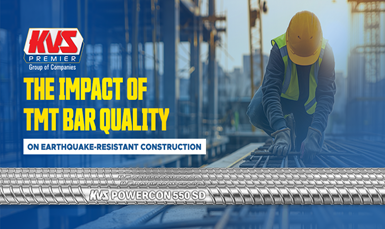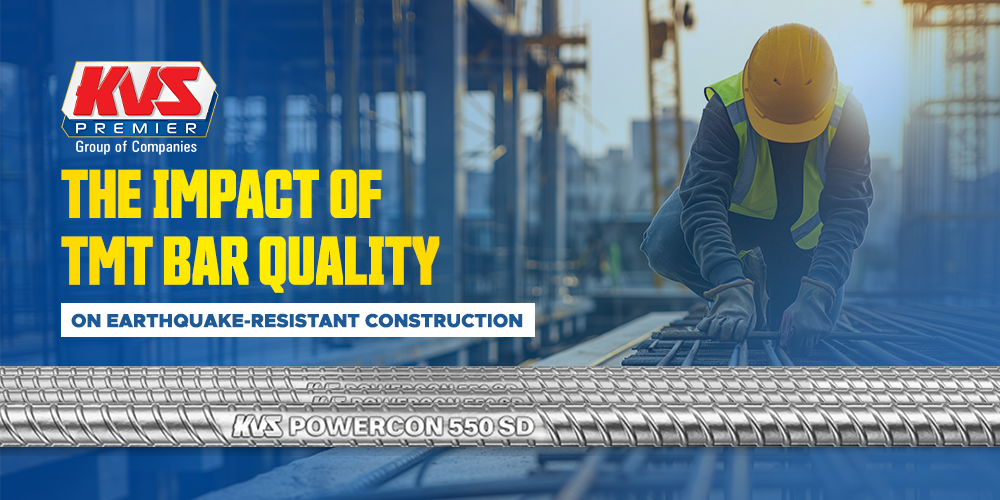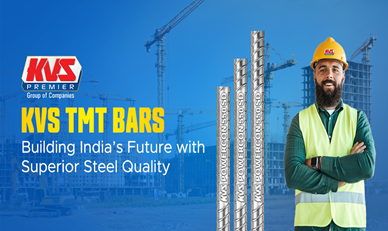

The Impact of TMT Bar Quality on Earthquake-Resistant Construction
When constructing structures that could resist the forces of nature, more so the force of earthquake in the present epoch, the choice of material quality cannot be overemphasized. TMT bars occupy an optimal position regarding the safety and durability of construction. But, in particular, what makes TMT bars so significant in earthquake-resistant construction, and how can you be sure you are using high-quality TMT bars?
Let’s explore.
Understanding TMT Bars: The Support of Mighty Frames
TMT bars are important in reinforced concrete construction since they are thermomechanically treated. They have features like high strength, flexibility, and high corrosion resistance. The TMT process includes heat treatment of steel bars, such as quenching at high temperatures and cooling at the TMT process temperatures. This forms the outer shell of high tensile strength and the inner core of high elasticity. This peculiar structure allows the TMT bars to flex and elongate, resulting in their ability to withstand earthquake forces.
The capacity of a structure to deform and withstand vibrations without falling is critical for buildings during earthquakes. The flexible TMT bars, the so-called ductile bars, play an important role here because of the deformation they undergo without fracturing. The best TMT bars should be able to deform under load and not rupture so that the building does not collapse or suffer much damage during an earthquake.
Why Quality Matters: The Comparison Between Ordinary and High Strength TMT Bars
It must be noted that not all TMT bars are the same. Thus, the quality of TMT bars may differ depending on the manufacturing process, the quality of the raw material used, and compliance with standards. Whenever a building is to be constructed in an earthquake-prone zone, it becomes compulsory to use only the best TMT bars that conform to the prescribed quality.
The TMT and steel are produced with accurate control of the chemical composition for the particular fabrication of TMT bars. They have just the right measure of rigidity and robustness, which is vital when bearing loads of seismic forces. TMT bars of lower quality may not be standard in strength and flexibility, making them unfit for use during earthquakes.
How to Choose the Best TMT Bars for Your Construction Project
Here are some key factors to consider:
- Grade of TMT Bars: TMT bars come in various grades: Fe 415, Fe 500, Fe 550, and Fe 600. The symbol specifies the grade of the bars and, hence, their strength. Because of their strength and flexibility, Fe 500 and Fe 550 grade reinforcing bars are preferred for earthquake-resistant construction.
- Brand Reputation: Choose TMT bars produced by companies that have established themselves in the market and produce bars that meet or exceed the standards. As already indicated, since they conform with the industry standards, famous brands spend lots of money procuring sophisticated equipment and time testing the TMT bars they deal with.
- Certification: Make sure you obtain TMT bars accredited by the right authority. It also uses certifications such as BIS (Bureau of Indian Standards) or ISO (International Organization for Standardization).
- Corrosion Resistance: Pay special attention to TMT bars with higher corrosion protection features in humid regions or along coastlines. They improve the durability and stability of the corrosion protection feature’s structure.
- Ductility: It is a critical measure for earthquake-security construction; hence, the flexibility of the TMT bars should be checked. Facilities with bars with higher ductility can intercept more seismic energy, which does not lead to sudden structural collapses.
The Final Words
Quake-proof construction is a challenging activity requiring prime attention from every construction element. The quality of TMT bars is paramount in defining buildings’ safety, durability, endurance, and power to withstand natural calamities. In selecting the best TMT bars for your construction project, you are constructing a tower and investing in the lives and well-being of those occupying the said structure.






Leave A Comment